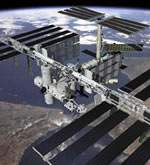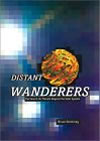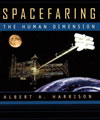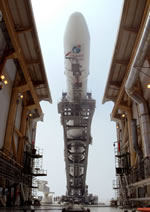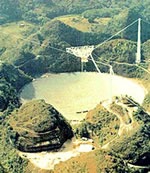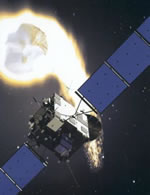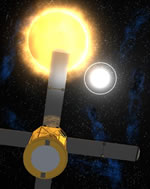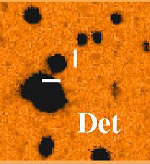
Image credit: ESO
A team of astronomers based in Hawaii have discovered a distant galaxy 12.8 billion light years away which shows us what the Universe looked like when it was only 900 million years old. They found the galaxy by using a special camera installed on the Canada-France-Hawaii telescope which searches for distant objects in a very specific frequency of light. By uncovering this galaxy, located in the constellation of Cetus, right near the star Mira, the team has developed a new methodology for discovering distant objects which should help future observers look even further into the past.
With improved telescopes and instruments, observations of extremely remote and faint galaxies have become possible that were until recently astronomers’ dreams.
One such object was found by a team of astronomers [2] with a wide-field camera installed at the Canada-France-Hawaii telescope at Mauna Kea (Hawaii, USA) during a search for extremely distant galaxies. Designated “z6VDF J022803-041618”, it was detected because of its unusual colour, being visible only on images obtained through a special optical filter isolating light in a narrow near-infrared band.
A follow-up spectrum of this object with the FORS2 multi-mode instrument at the ESO Very Large Telescope (VLT) confirmed that it is a very distant galaxy (the redshift is 6.17 [3]). It is seen as it was when the Universe was only about 900 million years old.
z6VDF J022803-041618 is one of the most distant galaxies for which spectra have been obtained so far. Interestingly, it was discovered because of the light emitted by its massive stars and not, as originally expected, from emission by hydrogen gas.
A brief history of the early Universe
Most scientists agree that the Universe emanated from a hot and extremely dense initial state in a Big Bang. The latest observations indicate that this crucial event took place about 13,700 million years ago.
During the first few minutes, enormous quantities of hydrogen and helium nuclei with protons and neutrons were produced. There were also lots of free electrons and during the following epoch, the numerous photons were scattered from these and the atomic nuclei. At this stage, the Universe was completely opaque.
After some 100,000 years, the Universe had cooled down to a few thousand degrees and the nuclei and electrons now combined to form atoms. The photons were then no longer scattered from these and the Universe suddenly became transparent. Cosmologists refer to this moment as the “recombination epoch”. The microwave background radiation we now observe from all directions depicts the state of great uniformity in the Universe at that distant epoch.
In the next phase, the primeval atoms – more than 99% of which were of hydrogen and helium – moved together and began to form huge clouds from which stars and galaxies later emerged. The first generation of stars and, somewhat later, the first galaxies and quasars [4], produced intensive ultraviolet radiation. That radiation did not travel very far, however, despite the fact that the Universe had become transparent a long time ago. This is because the ultraviolet (short-wavelength) photons would be immediately absorbed by the hydrogen atoms, “knocking” electrons off those atoms, while longer-wavelength photons could travel much farther. The intergalactic gas thus again became ionized in steadily growing spheres around the ionizing sources.
At some moment, these spheres had become so big that they overlapped completely; this is referred to as the “epoch of re-ionization”. Until then, the ultraviolet radiation was absorbed by the atoms, but the Universe now also became transparent to this radiation. Before, the ultraviolet light from those first stars and galaxies could not be seen over large distances, but now the Universe suddenly appeared to be full of bright objects. It is for this reason that the time interval between the epochs of “recombination” and “re-ionization” is referred to as the “Dark Ages”.
When was the end of the “Dark Ages”?
The exact epoch of re-ionization is a subject of active debate among astronomers, but recent results from ground and space observations indicate that the “Dark Ages” lasted a few hundred million years. Various research programmes are now underway which attempt to determine better when these early events happened. For this, it is necesary to find and study in detail the earliest and hence, most distant, objects in the Universe – and this is a very demanding observational endeavour.
Light is dimmed by the square of the distance and the further we look out in space to observe an object – and therefore the further back in time we see it – the fainter it appears. At the same time, its dim light is shifted towards the red region of the spectrum due to the expansion of the Universe – the larger the distance, the larger the observed redshift [3].
The Lyman-alpha emission line
With ground-based telescopes, the faintest detection limits are achieved by observations in the visible part of the spectrum. The detection of very distant objects therefore requires observations of ultraviolet spectral signatures which have been redshifted into the visible region. Normally, the astronomers use for this the redshifted Lyman-alpha spectral emission line with rest wavelength 121.6 nm; it corresponds to photons emitted by hydrogen atoms when they change from an excited state to their fundamental state.
One obvious way of searching for the most distant galaxies is therefore to search for Lyman-alpha emission at the reddest (longest) possible wavelengths. The longer the wavelength of the observed Lyman-alpha line, the larger is the redshift and the distance, and the earlier is the epoch at which we see the galaxy and the closer we come towards the moment that marked the end of the “Dark Ages”.
CCD-detectors used in astronomical instruments (as well as in commercial digital cameras) are sensitive to light of wavelengths up to about 1000 nm (1 ?m), i.e., in the very near-infrared spectral region, beyond the reddest light that can be perceived by the human eye at about 700-750 nm.
The bright near-infrared night sky
There is another problem, however, for this kind of work. The search for faint Lyman-alpha emission from distant galaxies is complicated by the fact that the terrestrial atmosphere – through which all ground-based telescopes must look – also emits light. This is particularly so in the red and near-infrared part of the spectrum where hundreds of discrete emission lines originate from the hydroxyl molecule (the OH radical) that is present in the upper terrestrial atmosphere at an altitude of about 80 km (see PR Photo 13a/03).
This strong emission which the astronomers refer to as the “sky background” is responsible for the faintness limit at which celestial objects can be detected with ground-based telescopes at near-infrared wavelengths. However, there are fortunately spectral intervals of “low OH-background” where these emission lines are much fainter, thus allowing a fainter detection limit from ground observations. Two such “dark-sky windows” are evident in PR Photo 13a/03 near wavelengths of 820 and 920 nm.
Considering these aspects, a promising way to search efficiently for the most distant galaxies is therefore to observe at wavelengths near 920 nm by means of a narrow-band optical filter. Adapting the spectral width of this filter to about 10 nm allows the detection of as much light from the celestial objects as possible when emitted in a spectral line matching the filter, while minimizing the adverse influence of the sky emission.
In other words, with a maximum of light collected from the distant objects and a minimum of disturbing light from the terrestrial atmosphere, the chances for detecting those distant objects are optimal. The astronomers talk about “maximizing the contrast” of objects showing emission lines at this wavelength.
The CFHT Search Programme
Based on the above considerations, an international team of astronomers [2] installed a narrow-band optical filter centered at the near-infrared wavelength 920 nm on the CFH12K instrument at the Canada-France-Hawaii telescope on Mauna Kea (Hawaii, USA) to search for extremely distant galaxies. The CFH12K is a wide-field camera used at the prime focus of the CFHT, providing a field-of-view of approx. 30 x 40 arcmin2, somewhat larger than the full moon [5].
By comparing images of the same sky field taken through different filters, the astronomers were able to identify objects which appear comparatively “bright” in the NB920 image and “faint” (or are even not visible) in the corresponding images obtained through the other filters. A striking example is shown in PR Photo 13b/03 – the object at the center is well visible in the 920nm image, but not at all in the other images.
The most probable explanation for an object with such an unusual colour is that it is a very distant galaxy for which the observed wavelength of the strong Lyman-alpha emission line is close to 920 nm, due to the redshift. Any light emitted by the galaxy at wavelengths shorter than Lyman-alpha is strongly absorbed by intervening interstellar and intergalactic hydrogen gas; this is the reason that the object is not visible in all the other filters.
The VLT spectrum
In order to learn the true nature of this object, it is necessary to perform a spectroscopic follow-up, by observing its spectrum. This was accomplished with the FORS 2 multi-mode instrument at the 8.2-m VLT YEPUN telescope at the ESO Paranal Observatory. This facility provides a perfect combination of moderate spectral resolution and high sensitivity in the red for this kind of very demanding observation. The resulting (faint) spectrum is shown in PR Photo 13c/03.
PR Photo 13d/03 shows a tracing of the final (“cleaned”) spectrum of the object after extraction from the image shown in PR Photo 13c/03. One broad emission line is clearly detected (to the left of the center; enlarged in the insert). It is asymmetric, being depressed on its blue (left) side. This, combined with the fact that no continuum light is detected to the left of the line, is a clear spectral signature of the Lyman-alpha line: photons “bluer” than Lyman-alpha are heavily absorbed by the gas present in the galaxy itself, and in the intergalactic medium along the line-of-sight between the Earth and the object.
The spectroscopic observations therefore allowed the astronomers to identify unambiguously this line as Lyman-alpha, and therefore to confirm the great distance (high redshift) of this particular object. The measured redshift is 6.17, making this object one of the most distant galaxies ever detected. It received the designation “z6VDF J022803-041618” – the first part of this somewhat unwieldy name refers to the survey and the second indicates the position of this galaxy in the sky.
Starlight in the early Universe
However, these observations did not come without surprise! The astronomers had hoped (and expected) to detect the Lyman-alpha line from the object at the center of the 920 nm spectral window. However, while the Lyman-alpha line was found, it was positioned at a somewhat shorter wavelength.
Thus, it was not the Lyman-alpha emission that caused this galaxy to be “bright” in the narrow-band (NB920) image, but “continuum” emission at wavelengths longer than that of Lyman-alpha. This radiation is very faintly visible as a horizontal, diffuse line in PR Photo 13c/03.
One consequence is that the measured redshift of 6.17 is lower than the originally predicted redshift of about 6.5. Another is that z6VDF J022803-041618 was detected by light from its massive stars (the “continuum”) and not by emission from hydrogen gas (the Lyman-alpha line).
This interesting conclusion is of particular interest as it shows that it is in principle possible to detect galaxies at this enormous distance without having to rely on the Lyman-alpha emission line, which may not always be present in the spectra of the distant galaxies. This will provide the astronomers with a more complete picture of the galaxy population in the early Universe.
Moreover, observing more and more of these distant galaxies will help to better understand the ionization state of the Universe at this age: the ultraviolet light emitted by these galaxies should not reach us in a “neutral” Universe, i.e., before re-ionization occurred. The hunt for more such galaxies is now on to clarify how the transition from the Dark Ages happened!
Original Source: ESO News Release
